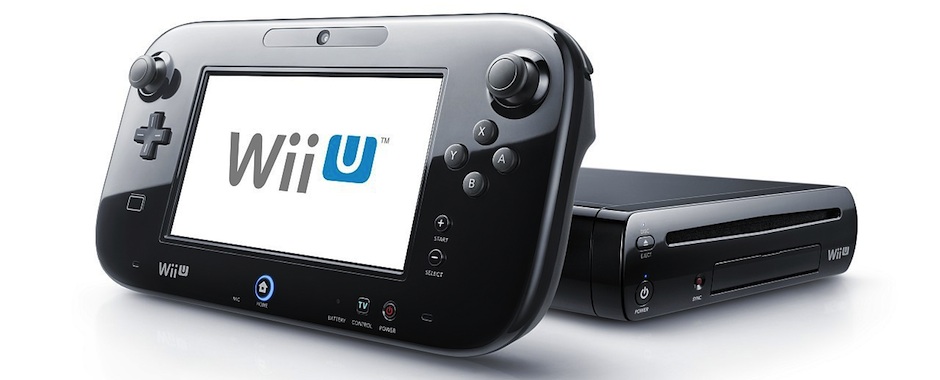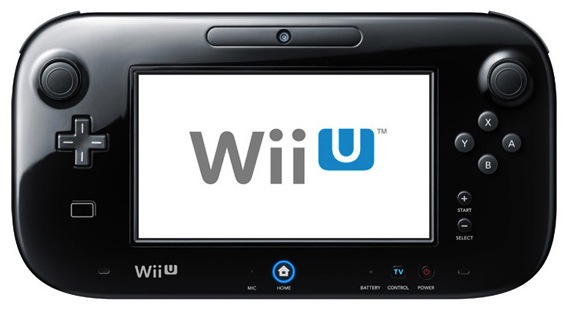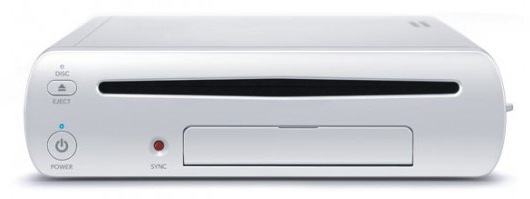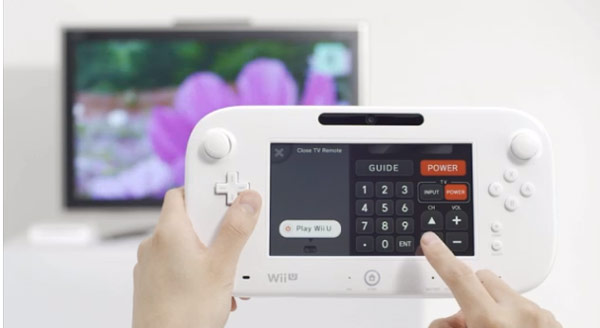It’s been six years since we stood in line for Nintendo’s revolutionary console, the Wii. It seems like Nintendo has tried to make evolutionary steps with every second console they put out, the GameCube being a relatively tame follow-up to the Nintendo64, and the Wii U building on Wii’s popularity and unique controls.
So how does Nintendo’s new console stack up versus their previous systems? Will the Wii U really move on to sell more units that the Wii, or is this new console just a flash in the pan of gimmicky gaming? It’s hard to answer the last two questions, but we’ll certainly throw in our two cents (and a few dollars after that) on Nintendo Wii U.
Technology
Wii U is certainly full of technology, although it is a lot of technology we’ve been seeing a lot of lately. Things like touchscreens, gyroscopes, accelerometers, cameras, analog sticks, and an NFC (near-field communications) reader all make an appearance on the Wii U’s GamePad controller. The console itself has four USB ports, an SD card slot, as well as HDMI and Component video out. With technology like that, this could certainly be a cell phone or the latest tablet. But the Wii U is of course a bona fide gaming machine, and it proves it.
The GamePad controller is the main draw, but the console itself is a marvel. It is tiny, although a loud beast of a machine (close to an Xbox 360, in fact), and airflow is certainly a concern, highlighted by the fact that Nintendo shoved in larger fans and heat sinks into the unit. The exterior of the device is also prone to fingerprints, as is the GamePad itself. The white model is not nearly as much of a culprit, but prints are still noticeable on it.
The touchscreen and accelerometer aren’t the main attractions by themselves, but rather how they work together. The Wii U has made a big case for asymmetric gaming. That is, displaying one thing on the television screen and another on the GamePad screen in your hand. Doing so allows for new experiences and gaming nirvana.
So how does it work? If you’ve been around the Wii since the MotionPlus attachment for your Wii remote, you know that the technology behind the motion control Nintendo creates is pretty well perfect. There are some hiccups here and there, sure, but overall, the GamePad’s accelerometer works flawlessly. And it should, because it isn’t being flailed around like a wand in a Harry Potter flick. Poor Wii remote.
Communication with the television is also very well synced, considering how much data is passing through the airwaves. When playing Takamaru’s Ninja Castle in Nintendo Land, a game where you have to fling ninja stars from your GamePad to the television screen, there was no lag whatsoever from the time we flicked to the ninja star hitting our opponent. It felt like everything was on one device; a large 3DS, if you will.
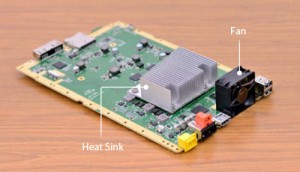 Asynchronous gameplay is not new to Nintendo. In fact, they’ve been at it in one form or another since the early 2000s. Basically what Wii U is, at heart is a (really) big 3DS. The main difference here is that the bottom and top screen (the GamePad and TV, respectively) are not fixed to each other and one can therefore be in front of the other, changing the way we play.
Asynchronous gameplay is not new to Nintendo. In fact, they’ve been at it in one form or another since the early 2000s. Basically what Wii U is, at heart is a (really) big 3DS. The main difference here is that the bottom and top screen (the GamePad and TV, respectively) are not fixed to each other and one can therefore be in front of the other, changing the way we play.
We’ll get into how well the GamePad and television are implemented in reviews of each game that we play because that kind of content is really up to each individual developer. With that said, it is very simple to say that the technology that Nintendo has developed is very well tuned and it is clear that big-N has spent a lot of time making sure that the wireless streaming of data both to and from the GamePad has been optimized to see little to no lag whatsoever.
There is also NFC built into the GamePad, though no games support it at launch. There are also no games that support dual GamePads at launch, though the Wii U is capable of supporting up to two simultaneously. That is said to happen with a 30 frames per second framerate streamed to each GamePad – compared to the usual 60fps – but we won’t be able to test that until some games come out with that support.
The other piece of hardware built into the GamePad that we haven’t mentioned is the front-facing camera (there is no rear camera here). The camera itself is better than expected, producing a clear image on both the GamePad as well as the television. We’ll talk about uses of the camera in individual reviews, but it is worth noting that it is a higher resolution (at least, seemingly so) than we ever expected to get.
It is worth mentioning that the touchscreen is not capacitive like something you’d find in the latest smartphone. Of course, Nintendo has never put capacitive touchscreens in their devices, so it isn’t a step backward for them, but it certainly isn’t a step forward, either. The screen itself, however, is beautiful and has a very high pixel density that makes the screen look very sharp.
The stereo speakers built-in to the GamePad pump out some very high quality audio, especially considering the speaker on a Wii remote won’t pump out anything more than midi sounds. It is designed such that the GamePad plays foreground audio while the television plays the background, and in a very smart bit of audio engineering, Nintendo made a little thing in the Wii U great.
Design
As far as Wii U goes, it is a very understated machine. The console is virtually exactly the same design as the Wii before it, although the new version is about an inch and a half longer. You can stand it up with clips that come in the Deluxe Set only (seriously, would it have cost you that much to include the clips in the Basic Set, Nintendo?) or lay it down horizontally as we prefer.
There are a few other little nice touches on the console, including a door that opens into the console as opposed to outwards like the Wii U’s predecessor. It sounds like a silly little detail, but it’s a touch like this that makes the console just a little better.
The GamePad itself is also quite well-designed. It is far lighter than you might expect, and it doesn’t get tiring to hold it for long periods of time as we assumed. There is a ridge that runs the length of the back of the GamePad that makes it extraordinarily easy to balance, and two bubbles on either side that make for great hand grips. The bubbles are a new addition since the official unveiling at E3 2011, but the ridge is one thing that we remember most impressing us when we first saw the Wii U last year.
There are two triggers and two shoulder buttons on the GamePad, called ZR and ZL (the triggers) and R and L (the shoulder buttons). These tend to be the requisite setup nowadays, ushered in by a mix of the PlayStation controller and the trigger-slash-bumper design of the Xbox 360 controller. Nintendo has found a happy medium, actually making the triggers buttons themselves. They’re not actually pressure sensitive, but respond to a single click. We’re okay with that for games like Nintendo Land but aren’t too sure how that will play out when we settle down with a copy of Black Ops II and want a bit more accuracy. We’ll keep you in the loop.
Probably our only real complaint with the hardware itself is the face buttons. They’re easy enough to peck at and they’re very responsive, but they rattle far too much for a device that is meant to be moved to and fro. The stylus has an even worse rattling sound when slotted in its holder, so we’ve removed it and set it on our coffee table for when we actually need it. We tend to use our finger for the touch screen, but it’s still a pretty major annoyance that it rattles so much that we’ve taken it out. We know we’ll need it at some point and forget that we put it a few inches away from where we sit, and that will ruin the experience for us just a little bit.
There is a neat little function built-in to the home button beneath the screen on the GamePad which is a little glowing light that activates when you’ve got a new notification. Expect it to be active a lot in your first days of picking up a Wii U as you add friends and they respond, or as you receive messages and Wii U Chat requests.
Battery life isn’t something we tested since we have a GamePad dock nearby. We played for one to two hour sessions and popped the controller back into its cradle to top-up its battery, and haven’t noticed a drop below four bars yet. However, when we performed the initial system update which took about an hour to download and another ten minutes to install, we dropped to three out of four bars. This probably isn’t indicative of a four hour battery life, but it is worth mentioning that we did see a drop.
Operating System
Nintendo has never really been known for their incredible console software. The Wii’s software had very minimal updates through its six year life and hasn’t changed much at all in that time, though to be fair, neither has the PlayStation 3’s software. Wii U’s main screen is clearly a mixture of the 3DS home screen and something new with a series of tiles representing all that you can do with the console. There are 12 active tiles when you first get the console up and running, not including persistent icons for Miiverse, Nintendo eShop, Internet Browser, Nintendo TVii, and Notifications.
About half of the software you see, however, is going to be activated in “the coming weeks” according to Nintendo. Netflix is currently active, but YouTube, Amazon Video, and Hulu Plus, as well as Nintendo TVii are going to be available in the next month or so. Nintendo TVii, specifically, is said to be launching in December, likely just before Christmas.
Perhaps the neatest thing about the Wii U’s GamePad is its ability to act as a remote control for both your television as well as your set-top box. Television controls can actually be accessed even when the system is off, and although it is a bit slower than just picking up a remote that’s next to you, it is a very simple interface that is just plain cool to use. It’s surprising that it’s taken this long to get a controller to act as a bona fide remote control. Setting up the remote is also easy. You type in the manufacturer name of your set top box or television, and it does the rest. Setup was very impressive and the remote works far better than we could have ever thought.
Overall, the software is relatively quick, although there is a bit of lag between loading apps that seem like they should always be at the ready. Things like your daily activity log take a few seconds to load up which, while certainly not fatal, seems unnecessary. The background music is also another peeve; it quickly made us put the volume on mute. This is about par for the course with elevator-style music used in consoles, which is why we would have just preferred nothing, but we supposed Nintendo had to put something in.
Until we have more time to play around with Miiverse, there isn’t a lot we can say about it. From what we see, it is a cute little forum for some PictoChat-style conversations to centre around specific games. The eShop has been redesigned from the horrific looking 3DS version to the somewhat more palatable Wii U version.
The Name
There is nothing wrong with Wii U as a name. Sure, it isn’t the easiest thing in the world to say, and you sort of need to pause between ‘Wii’ and ‘U’, but beyond that, the name is pretty well thought out. It clearly expands on the Wii name that made Nintendo so successful in capturing more casual gamers, while bringing in the hardcore who can see that the name signals something new. See, for those casual gamers, it may as well be called, simply, “the next Wii.” But for those in the know, Wii U is a proper elaboration of an earlier idea from Nintendo and a perfect way to show that they’re staying true while also trying something new.
The Verdict
As with any console launch, the games are going to end up deciding the longevity of the system. The Wii U certainly has its technological ducks in a row, and save for a few cosmetic annoyances like fingerprints and loose styli, Wii U seems to be another successful home console. Much in the same way that Wii didn’t actually immediately take off, we think we’ll see the Wii U slowly ramp up into success as people realize its scarcity and innovative gameplay, and it will become a new phenomenon once news media gets hold of the story. Of course, by slowly, we really mean a few weeks time, but in technology, that is actually a lion’s age.
Note: This review was based on retail Wii U hardware provided to us by Nintendo of Canada Ltd. Please read our disclaimer regarding reviews and contact us with any questions.

